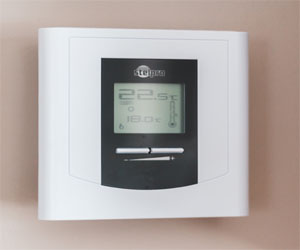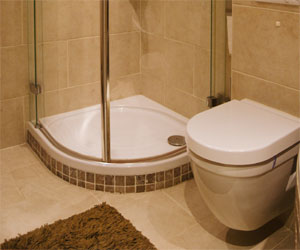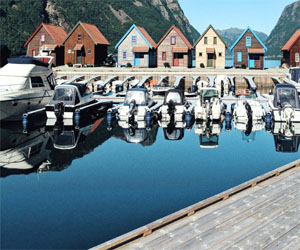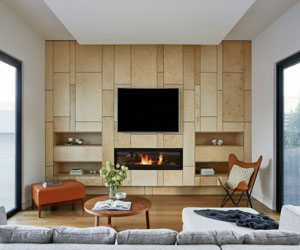


The Power Of Smart Home Upgrades

In the age of technological innovation, our homes are becoming smarter and more connected than ever before. Smart home upgrades have gained significant popularity in recent years, and for good reason. These upgrades offer a wide array of benefits, from increasing convenience and security to promoting energy efficiency. In this article, we'll delve into the world of smart home upgrades and explore how they can transform your living space into a cutting-edge, intelligent haven.
Convenience Redefined
One of the primary advantages of smart home upgrades is the convenience they bring to our daily lives. Imagine being able to control your lights, thermostat, and even your coffee maker with a simple voice command or a tap on your smartphone. With the help of devices like smart speakers and home automation systems, you can create a truly interconnected living space. Adjusting your home's settings to suit your preferences has never been easier, making everyday tasks more efficient and enjoyable.
Security And Peace Of Mind
Smart home security is another major draw for homeowners. Advanced security systems equipped with cameras, motion sensors, and doorbell cameras provide real-time monitoring and alerts. This means you can keep a watchful eye on your property, whether you're at home or miles away. Smart locks also add an extra layer of security, allowing you to control access remotely and even provide temporary digital keys to guests.
Energy Efficiency
Smart home upgrades can significantly contribute to reducing your energy consumption and environmental footprint. Smart thermostats, for instance, can create personalized heating and cooling schedules that adapt to your daily routines, resulting in lower energy bills. Moreover, you can monitor and control your energy usage with the help of energy management systems, which offer insights into where and how you can save energy.
Customized Entertainment
Entertainment systems have also undergone a transformation with smart home upgrades. With a single remote control or voice command, you can manage your audio and video equipment, from smart TVs and streaming devices to home theater systems. Integration with virtual assistants like Alexa or Google Assistant allows you to effortlessly switch between your favorite movies, music, and more.
Future-Proofing Your Home
Investing in smart home upgrades is a way to future-proof your living space. As technology continues to advance, your home can evolve along with it. Many smart devices and systems receive regular updates, ensuring that your home remains up-to-date with the latest features and security enhancements. This not only adds value to your property but also keeps it relevant and efficient in an ever-changing world.
Smart home upgrades are more than just a trend; they are a lifestyle choice. These upgrades offer a range of benefits that enhance your daily routines, improve security, and promote energy efficiency. Whether you're starting small with a few smart gadgets or fully integrating your home, the world of smart living is full of possibilities. Embracing these upgrades can truly revolutionize the way you experience and interact with your living space, making it smarter, more efficient, and more secure than ever before. So, why not take the leap into the world of smart living and upgrade your home today?
A Path To Sustainable Resource Management
 Understanding Water Conservation
Understanding Water Conservation
Water conservation refers to the careful and efficient use of water resources to minimize waste and ensure the availability of clean water for present and future generations. It is a multifaceted approach that encompasses a wide range of practices at the individual, community, and industrial levels.
Effective Water Conservation Methods
Fixing Leaks: One of the most basic yet crucial methods is fixing leaks in plumbing systems. A dripping faucet or a leaky pipe can waste significant amounts of water over time.
Low-Flow Fixtures: Installing low-flow faucets and showerheads is an effective way to reduce water consumption without compromising water pressure or functionality.
Dual-Flush Toilets: Dual-flush toilets provide two flushing options, allowing users to select a lower volume for liquid waste and a higher volume for solid waste.
Irrigation Efficiency: Employing efficient irrigation systems, such as drip irrigation and soaker hoses, can reduce water use in landscaping. Additionally, watering during cooler parts of the day helps minimize evaporation.
Rain Barrels And Cisterns: Collecting rainwater in barrels or cisterns can provide a free source of water for outdoor use, such as watering gardens and lawns.
Landscaping Practices: Using native plants and xeriscaping, a landscaping technique that conserves water, can significantly reduce the need for irrigation.
Water Recycling: Greywater systems can be used to collect and treat water from sinks, showers, and washing machines for reuse in flushing toilets or watering plants.
Building A Brighter Future Together
 Economic Resilience: Building economic resilience is crucial. Sustainable communities often emphasize local economies, supporting small businesses and initiatives that create jobs and enhance economic stability.
Economic Resilience: Building economic resilience is crucial. Sustainable communities often emphasize local economies, supporting small businesses and initiatives that create jobs and enhance economic stability.
Eco-Friendly Transportation: Sustainable communities prioritize alternative transportation options such as cycling, walking, and public transit to reduce dependence on fossil fuels and lower carbon emissions.
Energy Efficiency: Implementing energy-efficient technologies and renewable energy sources, such as solar panels and wind turbines, helps reduce energy consumption and dependence on non-renewable resources.
Benefits Of Sustainable Communities:
Reduced Environmental Impact: Sustainable communities actively reduce their environmental impact by promoting eco-conscious practices, reducing energy consumption, and minimizing waste.
Improved Quality Of Life: Residents of sustainable communities often report an improved quality of life, with access to green spaces, clean air, and a strong sense of community.
The Advantages Of Raised Beds
 One of the primary benefits of raised beds is their superior drainage and soil aeration. Because the soil is elevated, excess water drains more efficiently, preventing waterlogged soil and root rot. This feature is especially valuable in regions with heavy rainfall or poor soil drainage. Additionally, the loose soil in raised beds allows for better aeration, promoting healthy root development.
One of the primary benefits of raised beds is their superior drainage and soil aeration. Because the soil is elevated, excess water drains more efficiently, preventing waterlogged soil and root rot. This feature is especially valuable in regions with heavy rainfall or poor soil drainage. Additionally, the loose soil in raised beds allows for better aeration, promoting healthy root development.
Improved Soil Quality
Gardeners have control over the composition of the soil in raised beds. You can customize the soil mix to meet the specific needs of your plants. This flexibility is especially advantageous if your natural soil is of poor quality. Gardeners often use a blend of topsoil, compost, and organic matter to create a rich, fertile growing medium in their raised beds.
Warmer Soil And Extended Growing Season
Raised beds are known for their ability to warm up earlier in the spring and stay warmer in the fall, effectively extending the growing season. The elevated structure allows the soil to absorb and retain heat more efficiently. This feature enables gardeners to start planting earlier and continue harvesting crops later into the year.
Ease Of Maintenance
Working in raised beds is generally more comfortable due to the raised height, which reduces the need for bending and kneeling. This is particularly beneficial for individuals with mobility issues or back problems. Additionally, the defined and structured layout of raised beds makes it easier to manage and maintain your garden.
Weed And Pest Control
Raised beds help in controlling weeds, as the defined garden space minimizes the area where weeds can grow. Gardeners can install weed barriers or mulch within the bed to further prevent weed growth. Additionally, the elevated structure can deter some ground-dwelling pests and make it more challenging for them to access your plants.
The Dawn Of Intelligent Living
 Smart Living At Its Best
Smart Living At Its Best
Future-ready homes are characterized by their integration of cutting-edge technology, automation, and intelligent systems. These homes use the power of the Internet of Things (IoT) to create an interconnected ecosystem, where devices and appliances can communicate and work together seamlessly. From lighting and climate control to security and entertainment, every aspect of daily life is optimized for convenience and efficiency.
Energy Efficiency And Sustainability
A central focus of future-ready homes is sustainability. These homes incorporate energy-efficient solutions that not only reduce utility costs but also minimize environmental impact. Solar panels, smart lighting, and advanced insulation systems are just a few examples. Future-ready homes can harvest and store energy, monitor usage, and make real-time adjustments to conserve resources.
Security And Peace Of Mind
Security is paramount in future-ready homes. Advanced surveillance systems with high-resolution cameras, motion detectors, and smart locks provide unparalleled protection for homeowners. These systems can be monitored and controlled remotely through smartphones, giving homeowners peace of mind and the ability to respond swiftly to any security concerns.
Customization And Personalization
Future-ready homes are designed to adapt to the needs and preferences of their inhabitants. For example, intelligent thermostats learn your temperature preferences and create customized schedules. Personal virtual assistants, such as Amazon's Alexa or Google Assistant, respond to voice commands to control various functions within the home, including lighting, music, and climate control. This level of personalization creates a truly unique living experience.
Building A Sustainable Future
 The core principle of eco-friendly homes is to minimize the negative impact on the environment while maximizing the use of renewable and sustainable resources. Here are some key elements of eco-friendly homes:
The core principle of eco-friendly homes is to minimize the negative impact on the environment while maximizing the use of renewable and sustainable resources. Here are some key elements of eco-friendly homes:
Energy Efficiency: Eco-friendly homes are designed to be highly energy-efficient. They often feature better insulation, energy-efficient windows and doors, and advanced heating and cooling systems. These features reduce energy consumption and lower utility bills.
Renewable Energy: Many eco-friendly homes incorporate renewable energy sources such as solar panels and wind turbines. These technologies harness clean, sustainable energy from the sun and wind, reducing dependence on fossil fuels.
Water Conservation: Sustainable homes often feature water-saving appliances and fixtures. Rainwater harvesting and greywater recycling systems are also utilized to reduce water consumption, which is especially important in regions facing water scarcity.
Use Of Sustainable Materials: The construction of eco-friendly homes emphasizes the use of sustainable and recyclable building materials. This includes materials like bamboo, reclaimed wood, recycled glass, and low-VOC (volatile organic compound) paints to improve indoor air quality.
Passive Design: Passive design principles make use of natural elements like sunlight, wind, and shade to control the temperature and lighting within a home. This reduces the need for artificial heating, cooling, and lighting.
Green Roofs And Walls: Eco-friendly homes may incorporate green roofs and walls with vegetation that improves insulation, air quality, and aesthetics. Green spaces on rooftops and walls contribute to reduced urban heat islands and improved biodiversity.